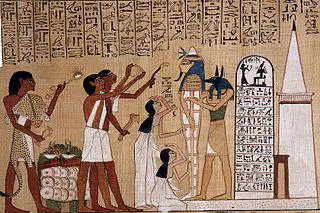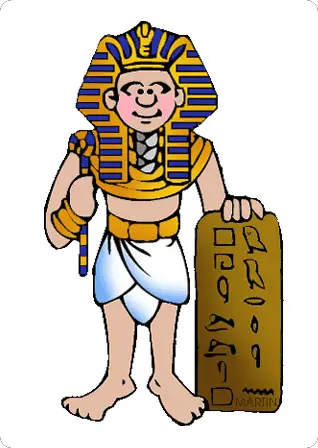Ancient Egyptian Funerals
There were some things that the Ancient Egyptians thought that they had to do in order that they would be able to make it to the afterlife.

Funeral Practices
There were a list of things that the Ancient Egyptians felt that they had to do to make sure that their loved ones made it to the afterlife including mummifying the body, casting spells, getting the tomb ready and preparing for the gods.
The Egyptian Gods
There were many different gods that the Egyptians would worship, and they believed that there would be different gods that judged each person after they died and before they could go to the afterlife.
The People
When someone died, the people would do different things such as parade around the town with their faces covered in mud. After the body was mummified, the people would follow around the priest and cry as the priest prayed over the body.
Mummification
When a person would die, the family would take the body into a place and the person would embalm the body or make the body so that it would not decay.
It was thought that the only way that a person could make it into the afterlife was if their body was preserved. If the body was not preserved, there was no way that person would be allowed to enter after deal.
Entering into the afterlife was the main source of focus for most of the Ancient Egyptians, so it was very important for their body to be mummified.
Ceremony
When the body died, the priest would come and do a ceremony over the body. He would wash the body and put oil on it and cover it in water that was taken from the Nile River. The priest would pray over the body and ask the gods to take them to the afterlife.
Organs
The organs would then be removed from the Ancient Egyptians body and they would be washed and put in jars. The organs were all removed except for the heart, which had to be kept in the body for the afterlife.
Steps
The body was then covered with a form of cloth called natron. The organs would be packed in the natron cloth as well and it would help to dry the body to prepare it for the afterlife.
For 40 days, the body would be dried out so that all of the fluids in the body would dry. After the body was dry, the natron is removed, and the organs are wrapped in the cloth and put back into the body. The body is again rubbed with oil and the nostrils are stuffed and make-up is applied to the eyes and the face.
The body is then decorated with amulets and charms so that the person that died can take these things into the afterlife with them. It was very important for the dead to have treasures to take with them when they died.
A mask was then put on the face of the body and it was used so that the Ba and Ka could find the body. The mask looked as close to what the person originally looked like and it was like a nametag so that the Ba and Ka could come together and know the body.
After the body is washed, cleaned, oiled and decorated, the body is put into a coffin that is called a cartouche. The name of the person is written on the casket so that the Ba and Ka know where to go. The name of the dead person has to be written somewhere so the Ba and Ka know which body to go to.
Resting Place
There is then a place where the priest takes the family and the friends, and the body is put into the tomb. People cry and follow the priest to this area while he prays.
The tomb is finally locked and sealed, and the body goes into its judgement in the afterlife. Sometimes, when a king was put into a pyramid, the pyramid would be sealed, and no one would ever be able to go into the pyramid again, but the soul of the king would be able to move around the tomb.
Opening of the Mouth Ceremony
One ceremony that took place in Ancient Egypt was the Opening of the Mouth Ceremony. This was a time when the priest would cast a spell and touch the mummy with a copper blade. This was done so that the mummy would be able to breathe and speak when they went into the afterlife.
The priest would also say a spell on the rest of the body like the legs and arms so that the mummy would be able to move in the afterlife, as well.
More Facts About Ancient Egyptian Funerals:
- If a person was not able to afford to be mummified, the loved ones could cast a spell that could help them to get into the afterlife.
- The canopic jars were shaped like the four sons of the god Horus.
- When a king took the throne, he would immediately have a temple built for him for when he died.
- Some of the things found in the tombs were drinks, food and magic spells.
- The wealthier a person was, the bigger their tomb was.
- Most of the tombs were located close to their family place.
What Did You Learn?
- What is an Ancient Egyptian funeral like? Some of the funerals were different than others. Some funerals involved people walking around with mud on their faces or crying.
- What was important about getting ready for a funeral? It was important that the priest prepare the body of the dead for the funeral. He had to do this because a person had to be a mummy before they could go into the afterlife.
- What if a person could not afford to be mummified? If a person could not afford to be mummified, their family could cast a spell that could get them into the afterlife.
- What was the Opening of the Mouth Ceremony? The Opening of the Mouth Ceremony was when the priest would pray a spell over the mummy and touch it with a copper blade so that it could talk and breathe in the afterlife.
- What did the Egyptians believe about the gods? The Egyptians believed that different gods would decide about the person in the afterlife, so they worshipped many different gods.



